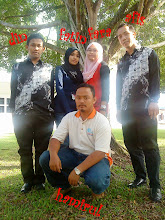Temperature and heat
Question 1
The Eiffel Tower, constructed in 1889 by Alexandre Eiffel, is an impressive latticework structure made of iron. If the tower is 301m high on a 22⁰C day, how much does height decrease when the temperature cools to 0.0⁰C?
Solution
∆L = αL0∆T
= (12 × 10⁻⁶ k⁻¹)(301 m)(-22K)
= -7.9cm
Question 2
The heat capacity of 1.00kg of water is 4186J/K.what is the temperature change of the water if(a)505 J of heat is added to the system, or (b)1010 J of heat is removed?
Solution
∆T = Q/C
= 505J/(4186J/K)
= 0.121K
∆T = Q/C
= -1010J/(4186J/K)
= 0.121K
Question 3
Calculate the radiated power from a sphere with a radius of 5.00 cm at the temperature 355 K. Assume the emissivity is unity.
Solution
P = eσ AT⁴
= (1)[5.67 × 10⁻⁸W/(m²·K⁴)]4π(0.0500m)²(355k)⁴
= 28.3W
Question 4
On New Year’s Day several human “polar bears” prepare for their annual dip into the icy waters of Narragansett Bay. One of these hardy soyls has a surface area of 1.15m² and a surface temperature of 303 K( -30⁰C). Find the net radiated power from this person (a) in a dressing room , where the temperatura is 293K(-20⁰C), and (b) outside, where the temperature is 273K (-0⁰C). Assume an emissivity of 0.900 for the person’s skin.
Solution
Pnet = eσ(T⁴-Ts⁴)
= (0.900)[5.67×10⁻⁸W/(m²·K⁴)](1.15m²)×[(303K)⁴ - (293K)⁴]
= 62.1W
Pnet = eσ(T⁴-Ts⁴)
= (0.900)[5.67×10⁻⁸W/(m²·K⁴)](1.15m²)×[(303K)⁴ - (273K)⁴]
= 169W
Question 5
(a) Suppose the volume V in Fig,15-7 is 30.0ml, while taht of V is 200 ml. What fraction, x, of the mass of the liquid has vaporized(at pressure P) when the volume is V = 100mL?
(b) If the heat of vaporization of this fictitious substance is 600kJ/kg and the mass is 80 g, how much heat must be added to the 30.0mL of liquid to reach the volume 100mL?
Solution
V = 100mL
= (1-x)(30.0mL)+x(200mL)
= 0.41
Amount of liquid is (0.41)(80 g) = 32.8g
= heat = (600kJ/kg)(0.0328 kg)=19.7kJ
